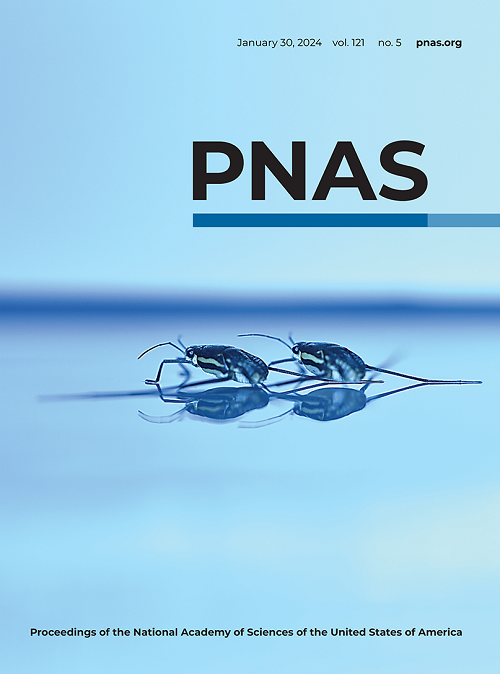具有潜在原始遗传字母表的非酶RNA复制
IF 9.4
1区 综合性期刊
Q1 MULTIDISCIPLINARY SCIENCES
Proceedings of the National Academy of Sciences of the United States of America
Pub Date : 2025-05-21
DOI:10.1073/pnas.2505720122
引用次数: 0
摘要
非酶RNA复制被认为在生命起源过程中负责遗传信息的复制。然而,典型核苷酸(A、U、G和C)的化学复制强烈倾向于G和C的结合,而不利于A和U的结合,尤其是U,因为G:C比A:U碱基对更强,U的堆叠相互作用更弱。最近在益生元化学中的进展表明,2-硫代嘧啶是典型嘧啶的前体,提高了它们可能在RNA复制化学中发挥重要作用的可能性。此外,2-硫代嘧啶(s 2 U)和肌苷(I)分别由2-硫代胞苷(s 2 C)和A脱胺形成。我们使用热力学和晶体学分析比较了I: s2 C和A: s2 U碱基对。我们发现I:s 2c碱基对与A:s 2u碱基对是同构和等能的。I: s2 C碱基对比标准的G:C碱基对弱,而a: s2 U碱基对比标准的a:U碱基对强,因此由s2 U、s2 C、I和a组成的遗传字母表产生具有均匀碱基对能量的RNA双工。与这些结果一致的是,非酶促模板导向引物延伸反应的动力学分析表明,s2c和s2u底物与模板中的I和A结合相似,反之亦然。我们的工作支持了由s2u, s2c, I和a组成的潜在原始遗传字母表的可行性,并为非酶模板复制过程中长期存在的偏核苷酸整合问题提供了潜在的解决方案。本文章由计算机程序翻译,如有差异,请以英文原文为准。
Nonenzymatic RNA copying with a potentially primordial genetic alphabet
Nonenzymatic RNA copying is thought to have been responsible for the replication of genetic information during the origin of life. However, chemical copying with the canonical nucleotides (A, U, G, and C) strongly favors the incorporation of G and C and disfavors the incorporation of A and especially U because of the stronger G:C vs. A:U base pair and the weaker stacking interactions of U. Recent advances in prebiotic chemistry suggest that the 2-thiopyrimidines were precursors to the canonical pyrimidines, raising the possibility that they may have played an important early role in RNA copying chemistry. Furthermore, 2-thiouridine (s 2 U) and inosine (I) form by deamination of 2-thiocytidine (s 2 C) and A, respectively. We used thermodynamic and crystallographic analyses to compare the I:s 2 C and A:s 2 U base pairs. We find that the I:s 2 C base pair is isomorphic and isoenergetic with the A:s 2 U base pair. The I:s 2 C base pair is weaker than a canonical G:C base pair, while the A:s 2 U base pair is stronger than the canonical A:U base pair, so that a genetic alphabet consisting of s 2 U, s 2 C, I, and A generates RNA duplexes with uniform base pairing energies. Consistent with these results, kinetic analysis of nonenzymatic template-directed primer extension reactions reveals that s 2 C and s 2 U substrates bind similarly to I and A in the template, and vice versa. Our work supports the plausibility of a potentially primordial genetic alphabet consisting of s 2 U, s 2 C, I, and A and offers a potential solution to the long-standing problem of biased nucleotide incorporation during nonenzymatic template copying.
求助全文
通过发布文献求助,成功后即可免费获取论文全文。
去求助
来源期刊
CiteScore
19.00
自引率
0.90%
发文量
3575
审稿时长
2.5 months
期刊介绍:
The Proceedings of the National Academy of Sciences (PNAS), a peer-reviewed journal of the National Academy of Sciences (NAS), serves as an authoritative source for high-impact, original research across the biological, physical, and social sciences. With a global scope, the journal welcomes submissions from researchers worldwide, making it an inclusive platform for advancing scientific knowledge.

 求助内容:
求助内容: 应助结果提醒方式:
应助结果提醒方式:


